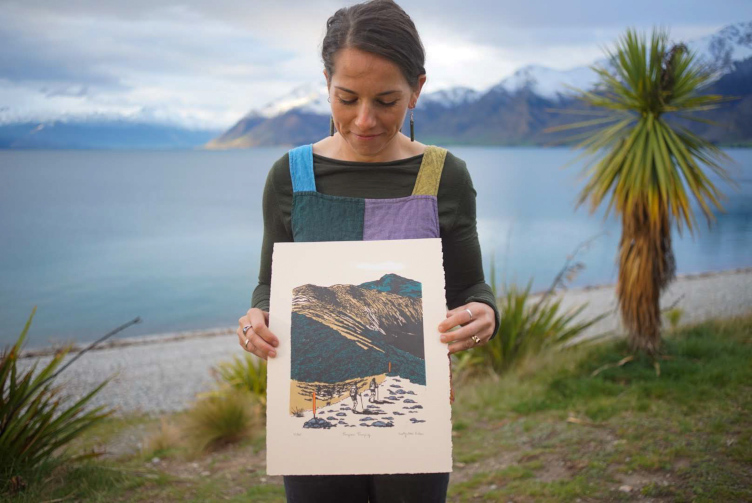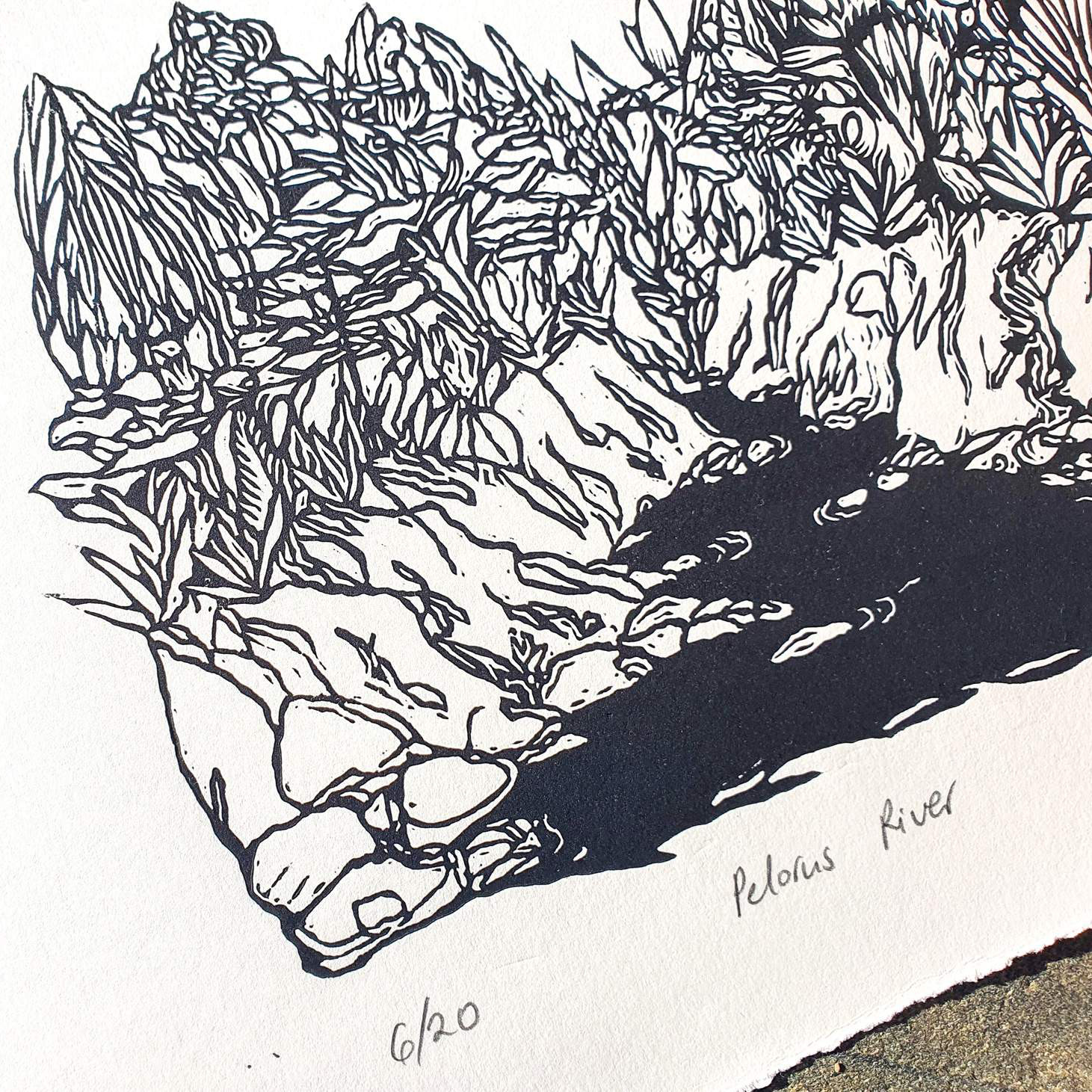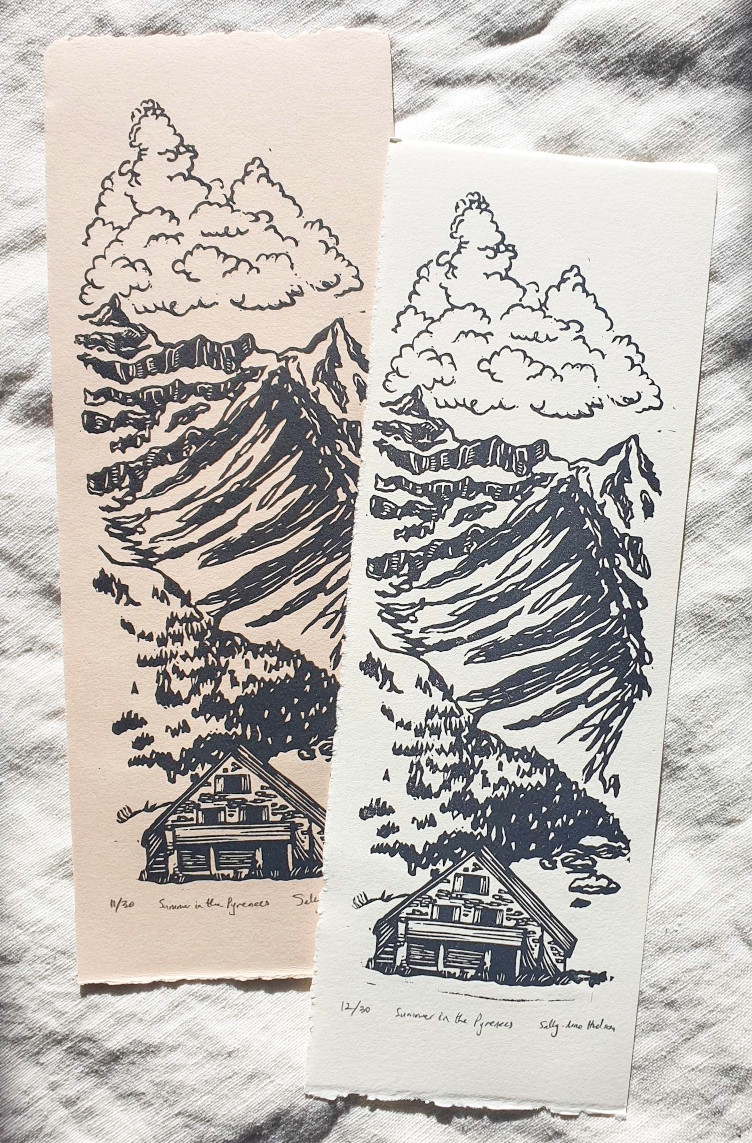Sally-Mae Hudson of Shapes by Sal is a self-taught Linocut printmaker, discovering the art form nearly three years ago. Sally’s appreciation for the great outdoors and the natural environment underpins the majority of her work. Her work is as much about inspiring others to appreciate the natural world, as it is her own artistic expression. Sally currently works part-time for WAI Wanaka, an environmental organisation where she is part of a Jobs for Nature field team.
I make original Linocut prints on both paper and fabric. Linocut is a form of relief printmaking and involves carving a design into Linoleum and then inking the block up, and everything that is left raised is printed as the image. My designs are mostly interpretations of my own experiences with the great outdoors and our natural environment.
How did you get into your craft?
In 2018 I was not in a great place mentally. I had finished my study in Outdoor Education, moved cities, wasn’t enjoying the little work that I had and generally didn’t know what I should be doing with my life. Naturally I was drawn (haha) to my creative side and started doing detailed drawings, but found I was becoming impatient with the slow process. My partner and I took a holiday in Cairns where we stumbled upon the local Printmakers Society exhibition and I just thought yes, that looks fun! I had done a wee bit of woodcut at high school so I knew the basics and two of my sisters had taken printmaking, so had actually done Linocut. Safe to say I had a lot of questions for them. Less than two weeks after we got back from our trip, I bought some cheap tools and gave it a try. I found Linocut to be incredibly economical to get started with and an easy medium to experiment in. I have always been creative and, growing up with my six siblings, creativeness was always encouraged – perhaps a way to distract and entertain us all! We all still create in some way or another and I dream of opening a little family shop full of our homemade goods.


Do you have formal training or qualifications in your craft?
None at all, I’ve never even attended a printmaking class. After high school I lived in Germany for a year and towards the end of my time there I was accepted at Massey University to study Art and Design. Plans changed after spending a few days in the mountains in Switzerland. I was reminded of my love for the outdoors and came to realise I didn’t want to sit inside for three years studying art, deciding instead to head to Christchurch and study Outdoor Education and Sustainability at CPIT (now Ara).
I definitely think there are benefits to having formal training, but for me personally on my Linocut journey I feel I am much more open to experimenting than perhaps if I had been trained “properly”. When I want to achieve a certain effect I look at what I want the outcome to be and try to find a pathway to get there. I don’t have all the answers and make a lot of mistakes along the way, but when I manage to realise what I set out to do, the things that worked stick around for next time and my printmaking journey progresses a bit further.
Your favourite materials, tools and processes?
My Pfeil gouges are definitely my favourite carving tools. I love Legions, Stonehenge paper. It’s fairly thick paper, but has a lovely smooth surface and even without a press it prints quite well, albeit with a lot of elbow grease! I also love my iPad for producing quick concept sketches. Ternes Burton tabs are amazing for getting the registration right.
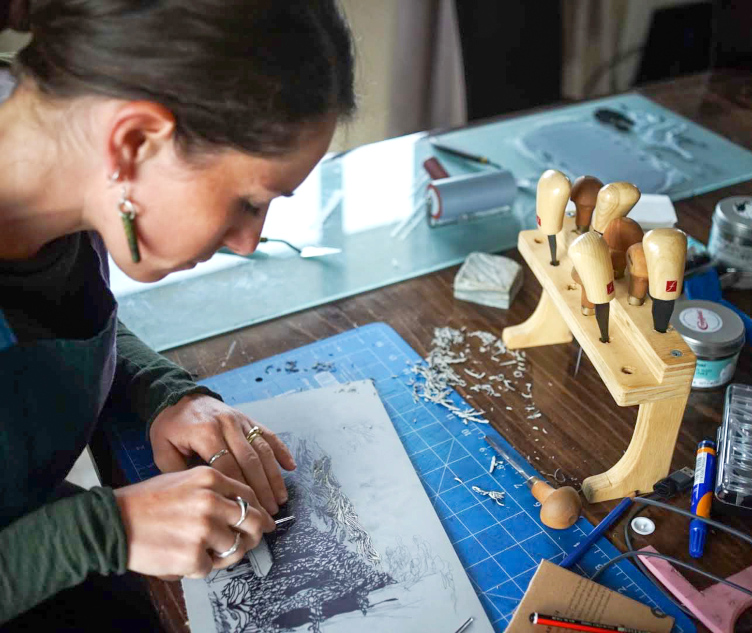
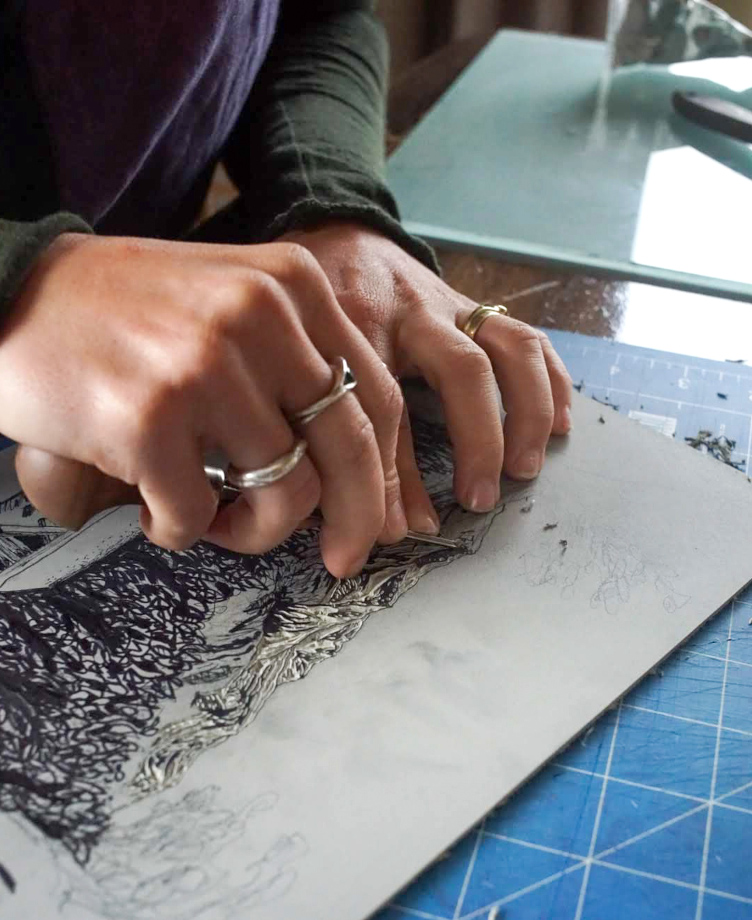
Tell us about some of the techniques involved in producing one of your pieces
I often create multi-block prints, where I carve different parts of the print onto separate pieces of Lino so that I can print various colours and layers. This has taken me a while to get my head around because both the paper and each Lino-block needs to be in the exact same place (this is what you’ll hear printmakers refer to as registration). To ensure my paper is in the same place, I use Ternes Burton pins and tabs. The pins are taped onto the table. The tabs are taped onto the back of the paper and left there until the print is completed. The tabs are then clipped into the pins. Whilst clipped into the pins the paper doesn’t move at all and (theoretically) should be in the same spot with each layer! To ensure the Lino-blocks are in the same spot, I create a right angle/L-shaped mount which I tape to the table. I use whatever I have for this such as cardboard or Perspex. Once I have my mount ready I can butt the Lino-blocks right up against it. I roll ink onto the block with a brayer, then I clip my paper into the pins and use a barren to apply pressure to the back of the paper. Everywhere that is inked up will transfer to the paper. I repeat this with each different Lino-block.
What inspires you?
My biggest inspiration will always be our natural world, and everything outdoors. I love the mountains and my recent move to Wanaka has been giving me a lot of inspiration even in my day to day life. I also get inspiration from other peoples’ work, often in the way a feeling is conveyed. This is something I strive for – to convey the feeling of a place.
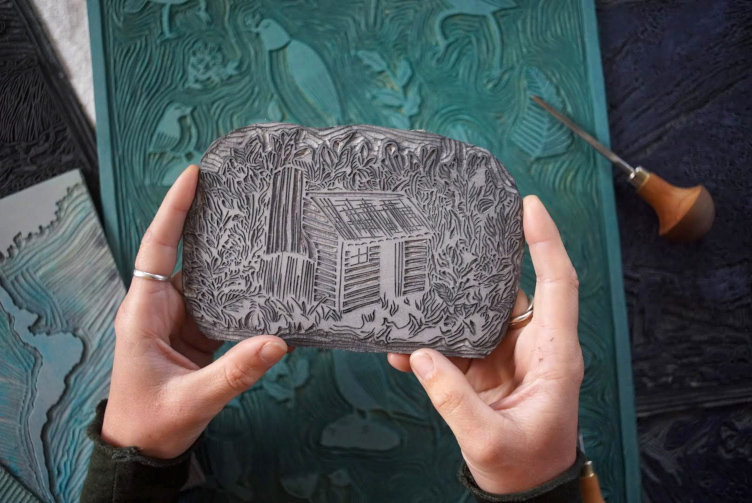
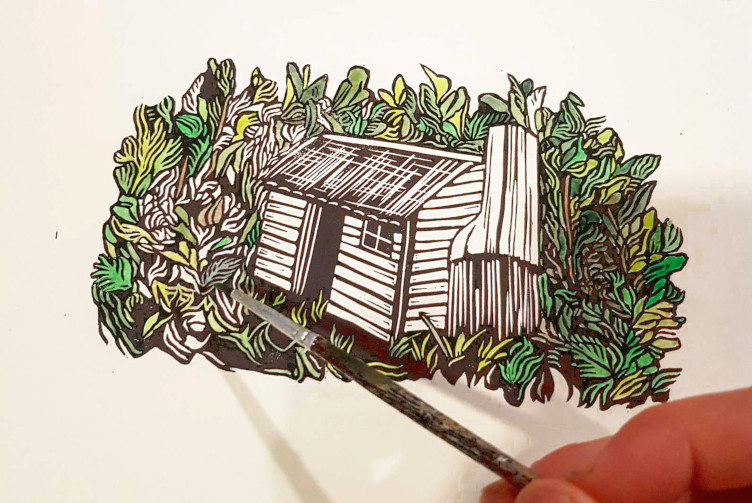
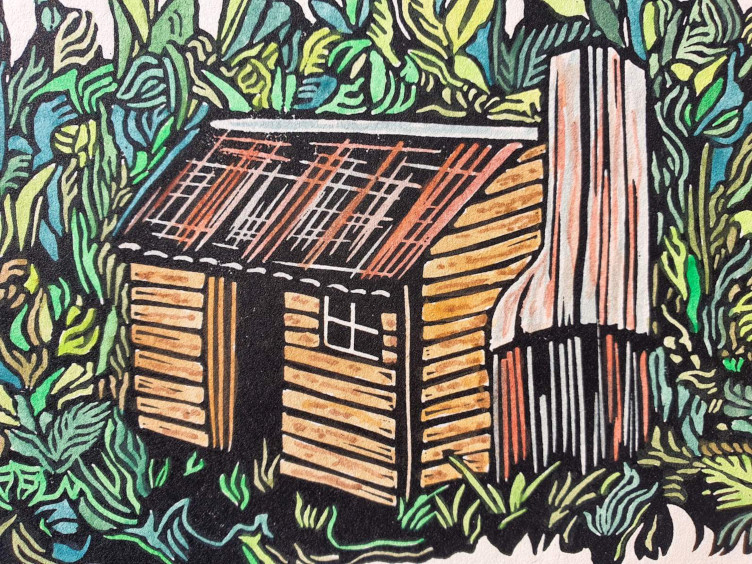
Is there a philosophy behind your work?
I think I have a natural philosophy of wanting to inspire others to be in awe of, appreciate, and care for the natural environment around us. It’s not an intended philosophy, but it’s what comes out of me through my creative process. I believe that if you have a connection to the natural world you are more likely to care for it. I really try to be as sustainable with my practice as possible, particularly when it comes to packaging as it’s somewhere that we, as sellers, can really use to promote conscious changes. I package prints with reused cardboard and reuse postage bags from my own purchases as well as collecting bags from friends and family to use. Where repurposing isn’t possible, I try to be as plastic free as possible.
What has been a highlight of your maker journey so far?
I think just experimenting and coming up with new and exciting things. This year, I’ve gotten to the point where I actually like what I’m creating and not only that, but I’m proud of my work. I feel as though I’ve finally found my ‘natural style’ and sometimes my own pieces will inspire a new piece, which is a wild place for me to be. Don’t get me wrong, self-doubt and imposter syndrome is still very real for me most days, but then other days I look at my work and I think wow, that’s pretty cool, I made that and I’m proud of myself.
Describe your creative process:
Basically, I want to get to the carving process as quickly as possible. I often have to tell myself to slow down and enjoy the process and when I do, I produce better prints too. I have no formal process so sometimes I start with a rough sketch on paper, sometimes it’s on the iPad. Sometimes I trace from the iPad and then transfer to Lino and other times I will draw straight onto the Lino. Once I have some lines on the Lino, I use either a sharpie or colour pencil to define the lines. Recently I have been really enjoying the fluidity you can achieve by using a sharpie. If it’s a large Linocut, I will probably only define the lines of some areas where I am sure of what I’m carving. Then I begin carving – the best part. I take photos throughout the carving process and then use the iPad to test the look and feel of patterns in areas I am yet to carve. It’s a very fluid and reactive process which allows me to hone in on the final look I want without planning every detail up front.
Currently my workspace is the dining room table, where I do my carving and the garage, where I print everything. The dining room table gets all day sun and is a lovely place to carve. The garage is the opposite and sometimes I avoid printing just because I don’t want to be in the cold, dark garage!
What are you currently listening to?
I’ve only recently got into podcasts, but I go from listening to comedy podcasts (Ahoy Hamish & Andy) to podcasts about political economics, something I’ve never been remotely interested in until recently as my husband and I try to buy our first home. I highly recommend ‘When the Facts Change’ by the Spin-off. In terms of music, I would say I listen to a lot of indie/alternative music.
What’s your favourite childhood book and why?
‘A Bad Case of the Stripes’ by David Shannon. It is about a girl who really liked lima beans but she got teased for liking lima beans so stopped eating them and then she started to break out in colourful patterns all over, the patterns stopped occurring when she ate lima beans. Like most children’s books, there’s a good moral message there – just be yourself, if you love lima beans then don’t let anyone stop you from eating them! But as a child I didn’t care much for the story, I just liked the pictures and the pictures in this book were really bold and colourful and detailed. I look forward to one day reading it to my own children!
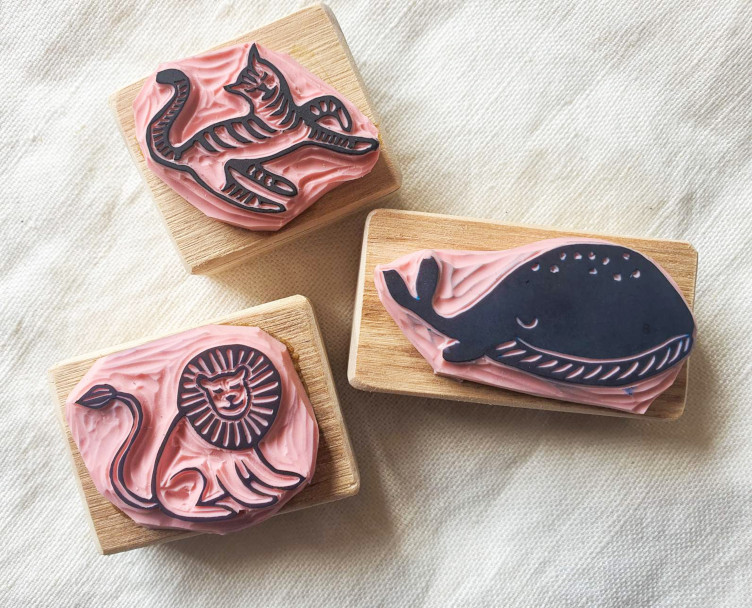

What would your advice be for those starting out in a crafty business?
Be your own biggest fan! This is often harder than it sounds, as it is hard putting yourself out there with something you’ve put a lot of love, effort and time into. However I think if you are positive and enthusiastic about your own work then this comes across to your customers. More often than not, you don’t need all the fancy tools and equipment, start with the basics. Especially when you’re starting out if you can, use what you already have and then eventually you can slowly start to purchase the fancy tools! Don’t feel like you have to quit your day job and become a full time craft business – unless of course this is something you want! I’ve slowly dropped days as I get busier and I personally enjoy having another job on the side because for one, it’s a stable income and two, it can be incredibly draining trying to be creative everyday of the week!
Why do you think it’s important to buy handmade and/or locally made goods?
Buying local and handmade goods is saying I support my neighbour and my community. When you buy something handmade or locally made, it’s often more of a thoughtful, conscious purchase. You may have decided that it’s something you truly need or love and therefore move away from the throw-away culture of cheap goods that can be bought on a whim and thrown away just as quickly.
What does it mean to you when someone buys your creations?
So much gratitude! I often panic when making a new listing on Felt, because I’ve spent weeks working on the piece. You can imagine the relief that comes when someone sees and chooses to buy my art, it is a huge compliment and validation for me. I would love to not need validation that my art is worthy, but unfortunately I think most people need this.

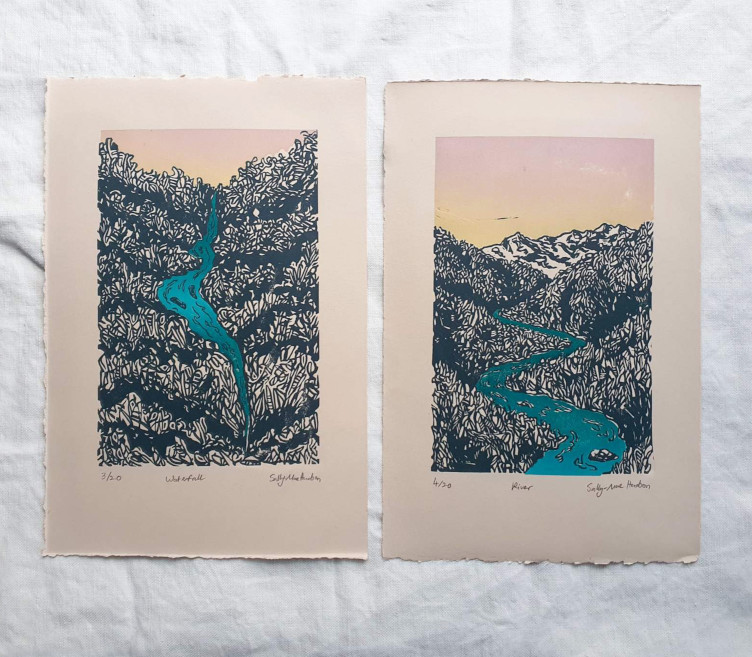
What was the last handmade item you bought and what attracted you to it?
I bought some mugs from Sumner Ceramics and I LOVE them! I love pottery because it’s something that I have attempted but struggled with, so I really appreciate people who can make beautiful and practical art with the medium!
What’s in store for the rest of 2021?
I’ll be attending Encraftment Market in Christchurch at the end of November (sadly Encraftment has now been cancelled – ed.) and the Cromwell Festive Fete at the beginning of December. Hopefully a bit of tramping and mountain biking before we head away for Christmas in Northland with the in-laws and a bit more tramping whilst we’re up there!
Special offer for Felt readers!
Sally-Mae is kindly offering 10% off any of the beautiful work in her Felt shop when you enter the voucher code MEETTHEMAKER10 at checkout. This offer is valid until 5pm, Monday 6 December 2021. Thanks so much Sally-Mae!
See more from Shapes by Sal here »

